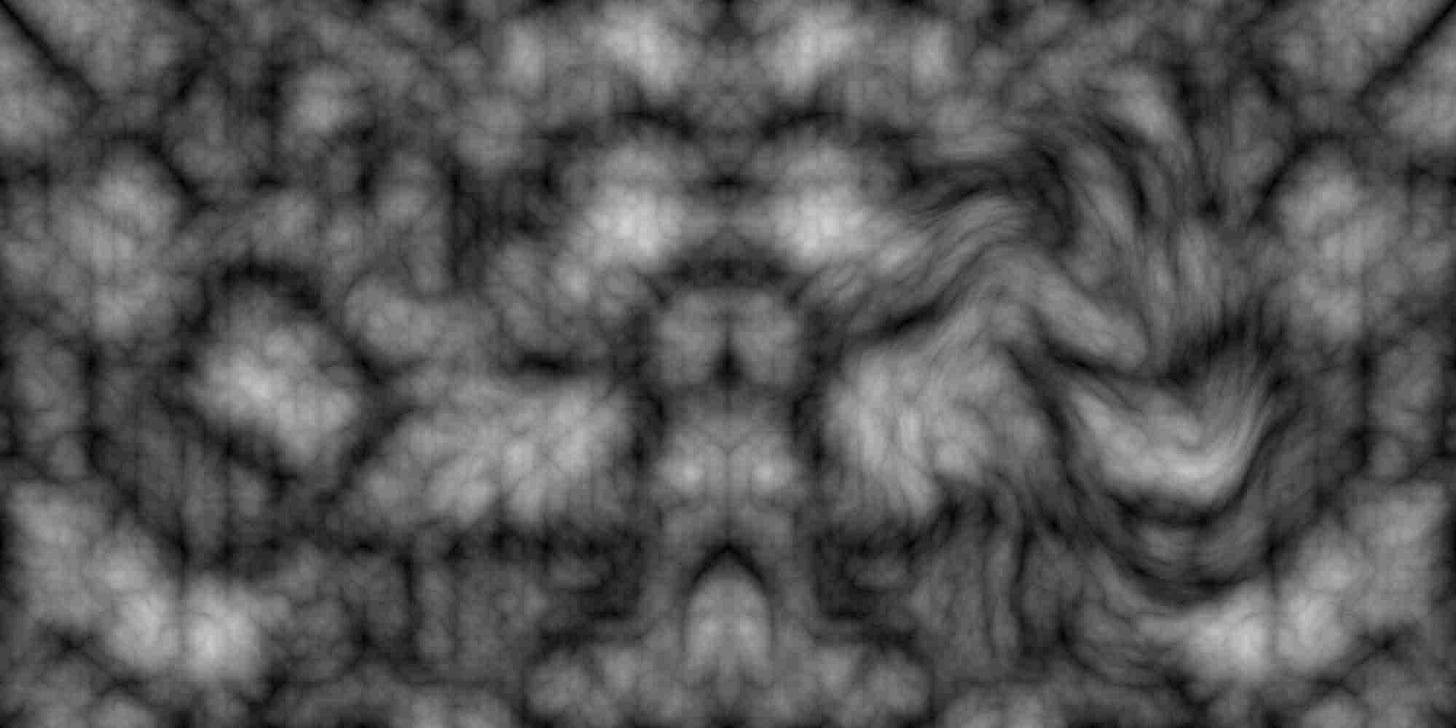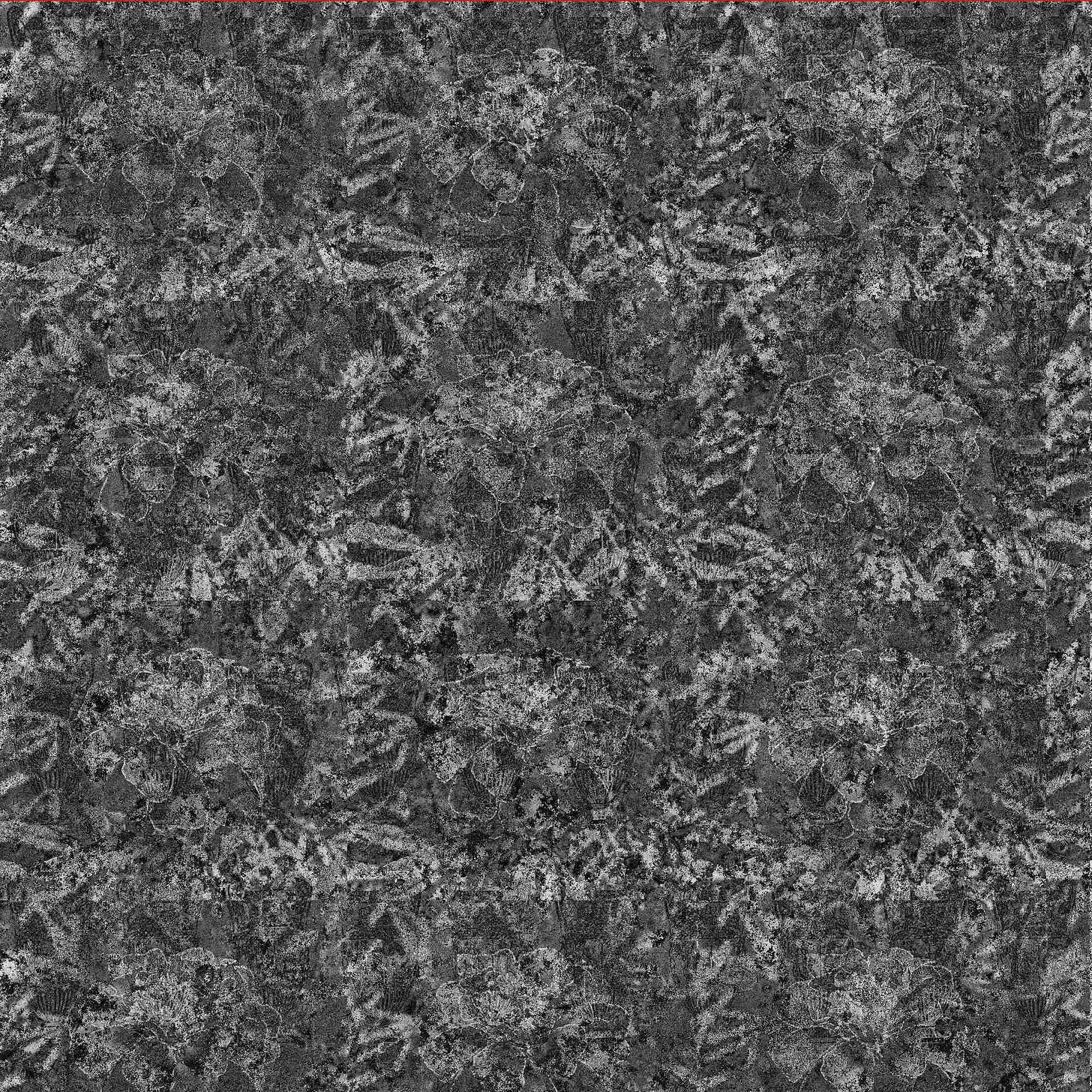What kind of landscape is the universe?
With perspectives from Poe, Darwin, Salby, ancient Peruvians, and bark beetles.
There might be a class of beings, human once, but now to humanity invisible, for whose scrutiny and for whose refined appreciation of the beautiful, more especially than for our own, had been set in order by God, the great landscape-garden of the whole earth.
Edgar Allan Poe, The Landscape Garden
The most pressing infelicity in the arrangement of material concerns the distribution of bone, muscle, keratin, etc. A cursory examination of the material environment will allow you to verify that these material are not distributed homogeneously and are almost entirely found at ground level, usually within a set of designated "dwellings" (houses, etc.) A moment of honest introspection should reveal the incorrectness of this arrangement. There are cases in which is is in fact correct for bone, muscle, keratin, etc. to be located at ground level and within "dwellings," but for it to be thus distributed in every case is much too far. It will be difficult to rectify this injustice on a wider scale, but immediate improvements may be improvised: I suggest for instance moving oneself and one's fellows as far above sea level as possible, and vacating "dwellings."
nostalgebraist, The Northern Caves
1. Beauty is Truth Plus Error Correction
Our sense of beauty is a set of adaptations. It’s evolved to inform our decisions on sex, what kind of landscape to live in, what food to eat, and what sounds to pay attention to.
And yet, somehow, we find beauty in poetry, math, and plenty of other things you can’t eat or have sex with. That’s because our sense of beauty has evolved to be stronger in the presence of error correction.
I’ll define “error correction” like this: something has error correction if, after you’ve changed or removed some small part of it, it’s usually obvious what the original state was.
Symmetry is the most popular kind of error correction. Here’s a randomly-generated image:
Playing “spot the difference” between this image and a slightly-changed one would be difficult and tedious. But now let’s flip it left-to-right and put the two side by side.
The image is now a bit more appealing, and it’d be much more obvious if I changed it in one spot, since most changes would break the symmetry.
But symmetry along a single fold isn’t enough to correct errors, only to spot them. If you only saw the second image, you wouldn’t know which side had been messed with. So let’s add a vertical symmetry in, too.
Now, a single error can be outvoted by the three clean copies. The image has strong redundancy, and it’s also starting to turn into something that could be mistaken for art, or at least a Rorschach blot, because our brains love symmetry, the more the better. Symmetrical faces indicate health, flowers are pretty, and I’d be reluctant to get into an airplane whose wings looked different from each other.
Poetic form is another classic kind of error correction. This is probably why we invented rhyming in the first place. I was recently on a train where the conductor would make announcements in the form of rhyming couplets: our time’s looking good/the next stop is Glenwood, and so on. This seemed like a cute affectation until my spouse turned to me and said “wait, did he say we needed to move towards the front or the back?” and I remembered the conductor saying “you need have no fear/if you move toward the rear.” Changing “rear” to “front” would break the rhyme, so it’s not possible to misremember, or mishear, just the one word from the message. And now that I was listening for it, I noticed that the most important word in the message was always part of the rhyme scheme. This does seem to be part of my aesthetic sense when it comes to rhyming poetry: compare
Thou foster-child of silence and slow time,
Sylvan historian, who canst thus express
A flowery tale more sweetly than our rhyme
John Keats, Ode on a Grecian Urn
to
Thou foster-child of silence and time can,
Patient Sylvan historian, thus express
A flower, not our rhyme, but sweeter than.
Not John Keats
Keats’s rhyming of “time” and “rhyme” isn’t, in itself, clever or inspired. But it makes the two concepts integral to the verse as a whole, in a way that my version doesn’t, which I think is the main reason my version is slightly worse. You can make my verse be about something else just by changing a word or two.
Thou foster-child of art and science can,
Patient Sylvan explorer, thus express
A theorem, not a poem, but sweeter than.
Very Not John Keats
My images above, even the ones with symmetry, aren’t that beautiful because they contain no Truth—they’re just random noise plus error correction. But Truth without clarity isn’t Beauty either. So that’s why I claim that beauty is truth plus error correction.
Is this an objective definition of beauty? Sort of. Humans and bees both like the manifold symmetries of flowers—symmetry is probably something close to universal as an error correction mechanism, and therefore universally beautiful. But rhymes are culture-specific—they require shared pronunciation. And what about QR codes? Are they beautiful?
2. Alien Beauty
QR codes look random to humans, but to a decoding algorithm, they’re rich in error correction. From Wikipedia:
My phone can still read that torn code correctly (it’s a link to Wikipedia), even though I can’t tell anything about what was torn off. The QR code protocol is designed to be flexible in how much error correction it has, in a way that can’t easily be achieved through symmetry. What’s it doing instead? Can you imagine a shape that has between 7 and 68 lines of symmetry, but only when viewed in 256-dimensional space? No? Good, because it’s nothing like that.
The protocol works anyway. We can’t see the error correction, but it’s demonstrably still there. One could imagine an alien species that evolved in the presence of useful QR codes, and therefore adapted to be able to instinctively understand them the way we understand faces and parabolas. They’d probably find beauty in them.
So would it be reasonable to say that there objectively is beauty in QR codes, even though we can’t appreciate it?
Not quite.
3. Every Beauty Has Its Alien
The problem with that idea is that for any given thing, there is some hypothetical observer who sees error-correction in it.
We can demonstrate this by taking a random image, and working backwards to make it meaningful. I’ll use a noisier one than I did before.

Let’s invent a protocol where this image encodes, with error correction, this image:
To do this, I’ll first create a tiling of the second image to make it the size of the first.
Then, using a program, I’ll take the difference in darkness for each corresponding pixel, and turn that into a new image where higher differences correspond to darker pixels.
Call this the Codec Image. Now, we can define the protocol: to interpret an image, run that process in reverse. Take the difference between the image and the Codec Image to get multiple copies of the original. Identify where it repeats, and use the repetitions to error-correct.
If you look closely at the Codec Image, you can see traces of the Grecian Urn drawing, one of its two parents. However! This protocol can be used to encode any image of a similar size. We’ve created it with a specific image in mind, and it’s shaped to match, but it’s still a universal protocol. Here’s another image:
And here’s the encoding of it:
Which is to say, the same algorithm that converts the random noise to the Grecian Urn also converts this image to the flower.
Ergo, beauty really is in the eye of the beholder. When you get abstract and mathematical enough in how you’re thinking about it, you loop back around into pure subjectivity.
4. Transhuman Beauty
I’ve written before about the Nazca Lines, the ancient art in the Nazca desert that is only comprehensible from an aerial view. I imagined that the creators of it were imagining us, their distant descendants, who would be able to fly, and thereby sending a message to a future high-tech civilization.
But that’s less sci-fi than what’s actually happening. It being impractical for humans to fly over every square foot of the vast desert, the Nazca Institute in Japan built flying robots, loaded with AI trained to detect art among the random rocks.

So far, the drones have found more than three hundred new lines. Here’s some of them.
Seeing these drawings didn’t merely require us to invent the airplane. We needed to invent a new kind of creature, something the artists were clearly into as well. We needed to create something that had superhuman powers but human-like aesthetic sensibilities, to spot them and then tell human archaeologists on the ground.
For thousands of years, then, these drawings were physically there, but the being who could recognize them as art, the being for whom they were drawn, was not. It existed only as a potential within our ancestors.
5. Everything is Secretly Perfect
The world looks pretty messy. Sure, there’s love, and the moon almost perfectly eclipses the sun, but there’s also torture, and a solar year is 365.2422 days long. There’s a lot in it that feels arbitrary. But what if the whole world is a work of art, just not for us?
It seems to be horror writers who have this thought the most often. The mythos of H.P. Lovecraft, in large part, is about strange aesthetics impinging on our own, to our cost. You can get there through religion or science fiction, but it’s harder. Horror imagines minds right on the edge of our perception, so alien we can’t understand them, but not so alien as to be innocuous. Why is the world the way it is? Because it pleases them. Maybe we have just the right balance of pleasure and pain, or maybe all they care about is the distribution pattern of keratin over the surface of the Earth.
Poe’s The Landscape Garden isn’t really a horror story1. Poe imagines the world as a garden meant for transhuman sensibilities, but that’s on the way to imagining creating a garden that would feel, to us, the way the world feels to these hypothetical human-like entities to whom it’s perfect. An environment that seems at once perfectly wild and perfectly designed.
The Northern Caves has a more straightforwardly horrific conceit—what if moral realist deontology is true? What if the universe has a fundamental moral law, but the law has nothing to do with any of our values? If moral philosophy tells us that doing the right thing will not make the world a better place, what then?
Both stories are wise to make these inhuman aesthetics in some way human-accessible. For Poe, they’re the aesthetics of hypothetical transhumans. In The Northern Caves, they can be derived by humans from first principles and introspection. That’s an important constraint if you want to be writing fiction, as opposed to something tautologically true. By analogous proof to the one above, there is certainly a coherent hypothetical mind that considers our world to be a perfect work of art. But is it one we could ever create, or more concretely imagine, inhabit, or encounter? That’s less certain.
6. Polydeism
What a book a devil's chaplain might write on the clumsy, wasteful, blundering, low and horribly cruel works of nature!
Charles Darwin, letter to J. D. Hooker.
Find a watch in the desert, said William Paley, and you can infer the existence of a watchmaker.
But when you look at all the apparent purposefulness in Nature, rather than picking and choosing your examples, you start to notice things that don't fit the Judeo-Christian concept of one benevolent God. Foxes seem well-designed to catch rabbits. Rabbits seem well-designed to evade foxes. Was the Creator having trouble making up Its mind?
When I design a toaster oven, I don't design one part that tries to get electricity to the coils and a second part that tries to prevent electricity from getting to the coils. It would be a waste of effort. Who designed the ecosystem, with its predators and prey, viruses and bacteria? Even the cactus plant, which you might think well-designed to provide water fruit to desert animals, is covered with inconvenient spines.
The ecosystem would make much more sense if it wasn't designed by a unitary Who, but, rather, created by a horde of deities—say from the Hindu or Shinto religions. This handily explains both the ubiquitous purposefulnesses, and the ubiquitous conflicts: More than one deity acted, often at cross-purposes.
Eliezer Yudkowsky, An Alien God
A camel is a horse designed by committee.
Unknown horse chauvinist
Our universe tends to appear to be natural. If Gods are performing miracles, they are always diligently disguising them as mysteries and coincidences. If they’re ever appearing personally in visions, it’s always under circumstances where it could be plausibly a hallucination, and/or there’s a plausible motive for a lie.
Our universe is also very interesting. It’s got us, and lots and lots of other stuff. There are some decent arguments, and a common intuition, that most apparently-naturalistic universes would be fundamentally less interesting than our own.
From these two observations, it follows directly that if our universe is in any sense a landscape garden, the gardener wanted it to look natural, but cool.
Now, just to head off a natural misreading, let me say clearly: I am not giving a reason why the universe exists. Because it doesn’t. No universe exists. Universes aren’t real. As I argue in that link, we exist simultaneously in every universe that fits our observations. In this view, both atheism and theism become somewhat incoherent. The universe where a God exists who wants the world to be just like this is coherent and fits our observations, therefore we are in that universe. But that universe is clearly aping a naturalistic one that also fits all of our observations, so we’re in a godless universe too, at least until we witness an unambiguous miracle.
This suggests that deism, the belief that the universe was purposefully created but proceeded naturalistically afterwards, is basically correct. But it’s unsatisfying to simply reverse-engineer a creator-God out of our observations, the way I invented an algorithm that turns one specific random square into a Grecian urn. So long as it feels arbitrary to us that the universe is a certain way, we can never partake in the divine aesthetic.
But why does it have to be one God? We exist in many different universes, in different larger contexts, with different creators. We’re a painting that hangs on the walls of many galleries, each with a different artist’s name on the plaque. All of whom, themselves, are in the same situation, each in finite but unbounded regress.
So our universe is not a garden; it’s a single plant. We appeal to the Gods because we appear natural and also fit into many different broader aesthetics. Our universe isn’t perfect, not in any remotely human sense. But it’s part of many, many gardens, each perfect to a different mind.
I’ll talk more about why this cosmology appeals to me in another post.
7. Further Reading: The Decipherment of Linear X
2024 has the Nazca drones connecting us to artists across millennia, which is pretty neat. Also, I can easily find the one other person who talks about Poe’s The Landscape Garden and the Nazca Lines in the same work. That person is Brian Conley, a New York-based artist and Borges character come to life. His Decipherment of Linear X observes that the markings made by bark beetles look like a variant of the ancient human language Linear B.
Conley writes:
I decided to hold in suspension what I know to be obvious—that the marks on the sticks I unearthed are made by insects and insects can’t write. I have chosen instead to consider, as a thought-experiment, the possibility that the marks are intentional and constitute the written language of Linear X.
This experiment takes him, and some incredibly game scientists, in some fascinating directions. What is the higher-level system creating these markings? Could we, in fact, coherently think of it as a designed language, in the way an evolved organism is a designed organism? Or, if not, should that actually stop us from declaring it to be a naturally-occurring language, one that had no speakers until Conley’s project?
Here’s the link again. My browser was a little shy about downloading it because I guess the site doesn’t encrypt traffic correctly, but I don’t think it’s inherently virus-ridden.
Thanks for reading!
Except in a sort of incidental way where he suggests that the conditions for true happiness are so stringent and contingent as to be impossible for most of us.
















Excellent and enlightening. I have two thoughts. First, that this, like everything else, proves that Immanuel Kant was right (kidding (mostly)). Second, that your polydeistic cosmology I believe misses something crucial about your own account of beauty.
On Kant. Kant's theory of the mind posited three fundamental cognitive faculties: reason, judgment, and the understanding. I don't have a great way of snappily giving the functions of each, but roughly a way to think about it is that a concept must (a) have rules which define it, (b) be applied to things we sense in the world, and (c) be able to be manipulated in the context of other concepts (e.g. by implication, comparison, derivation, etc.). I mean "must" in the sense that these things all happen, so therefore we necessarily have the capacity to make them happen. (a) is the understanding, (b) is judgment, and (c) is reason. Kant's theory of beauty is, roughly, that it is a sensible experience which pleases us through its general coherence (or "free play") with our faculty of judgment as subsuming the experience not under a particular concept, but under the goings-on of our faculty of the understanding in general. I.e., it plays nicely in a general sense with our capacity to fit things in the world under conceptual rules, i.e. i.e., there is a lot of 'error correction' going on. A note: Kant distinguishes this with perfection, as perfection is an experience instantiating a particularly good coherence with a particular concept; beauty is about playing well with the manner of concept-application generally. I hope I have explained this well.
On polydeism. I'll take your example of the rabbit and the hare. You consider them as having dueling prerogatives, but of course, aren't these prerogatives actually symmetrical? Or at least analogous to symmetry? Much as you would explain the missing corner of the four-way-symmetrical random noise by looking at the other three corners, would you not also explain the rabbit's powerful hind legs by way of the fox's speed? Or the rabbit's zig-zag path by way of the fox's consistent forward motion (see: https://jov.arvojournals.org/article.aspx?articleid=2137814)? The ecosystem is a proliferation of such symmetrical (or at least error-correcting) relationships. You explain the arctic fox's color by looking at its environment (both in terms of the landscape and other species), and it becomes easier to remember that it is white when you remember its environment. These relationships all interlock and to the extent that they do, the biological world becomes more beautiful in the same way as mathematics---becoming more parsimonious. This would seem, then, to me, to entail a monotheistic cosmology, but with a God for whom cross-purposes can be beautiful too. Take that as cruelly or as lovingly as you will. To me it feels almost Hegelian or Deweyan.